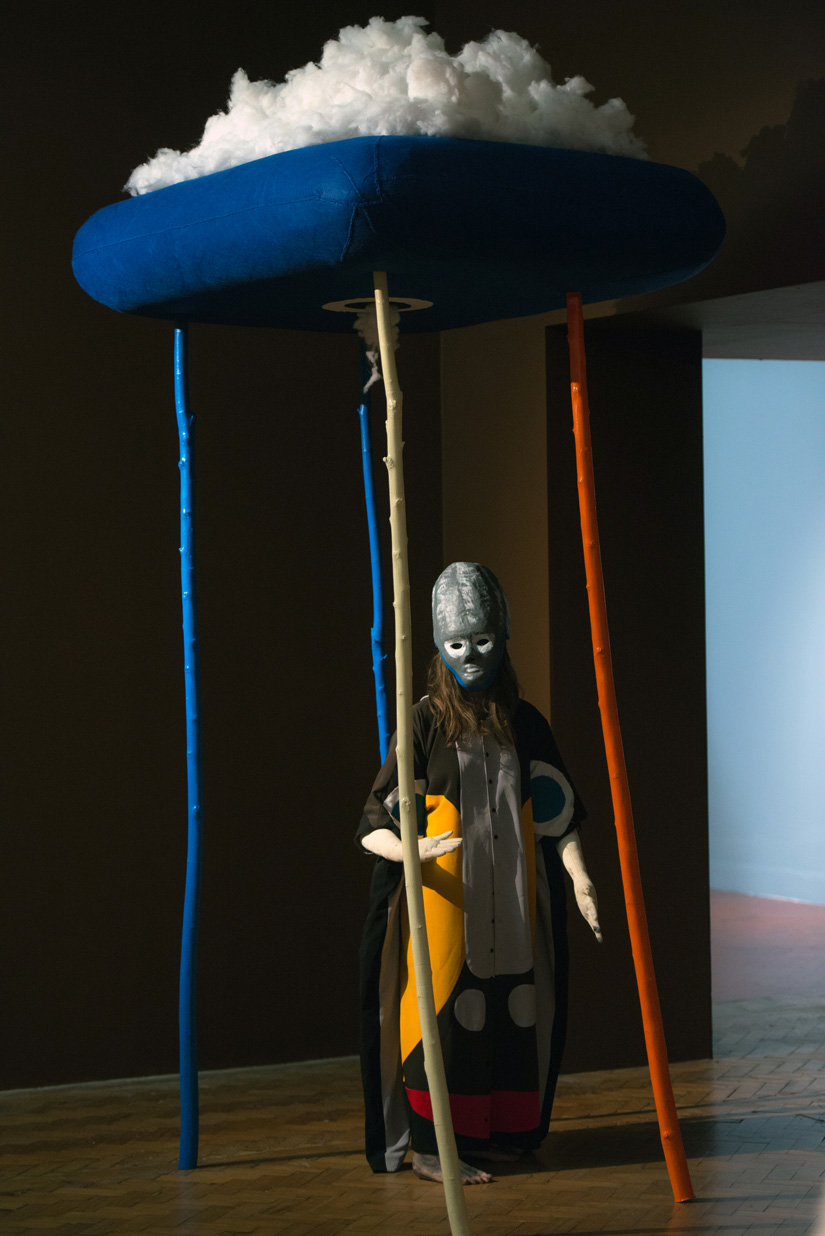 Which really should be “whom” but does anyone on the Red Carpet say that?
Which really should be “whom” but does anyone on the Red Carpet say that?
Another important collaborative element that had an influence on the music of Book of Love is the costumes. Kokoro has commissioned British artist Jonathan Baldock to create the set and costumes, and his work is vivid, surprising, and fantastic in every sense of the word. For the workshops this past April, Jonathan was also in Vancouver to observe the elements in progress, and he brought with him a mockup of the main costume.
This photo of another work of Jonathan’s gives you an idea of the kind of thing he does. And some of the photos of Kokoro’s dancing that I’ve posted have shown the traditional Butoh bodies-painted-white, and what I’d call “placeholder” costumes — costumes the dancers wore during work-in-progress presentations of Book of Love, while Jonathan was busy designing and making the costumes for the November premiere. Much like the dancers danced to “placeholder” music while I was writing the actual music for the show.
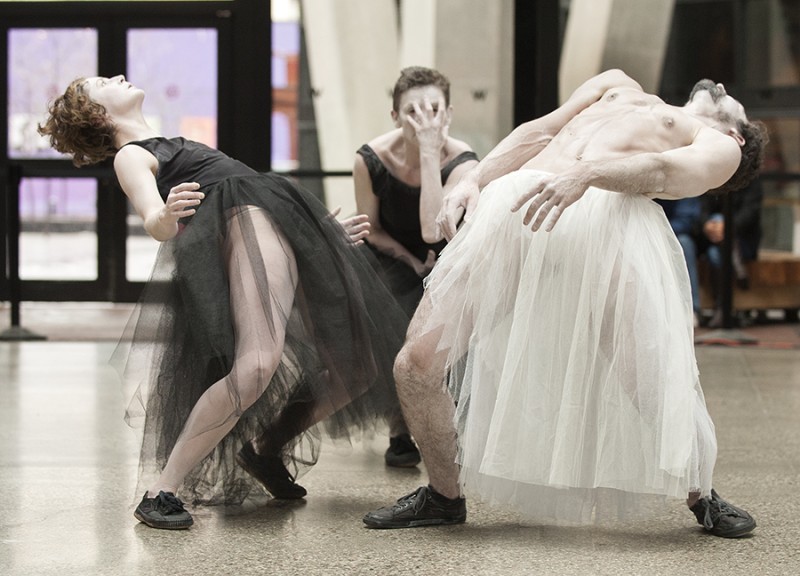
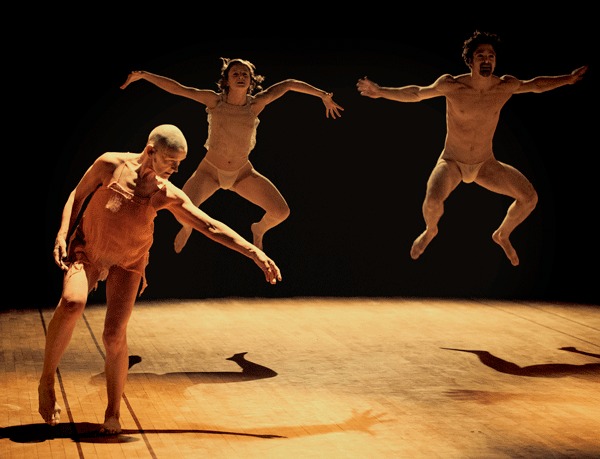
It was great to see the template of the costume in action. The exaggerated long sleeves become characters of their own, and give a sweep to many of the dancers’ gestures. (And no, the members of Standing Wave will not be playing with sleeves like this.) For me, the costume, being quite robe-like, conveys ceremony and ritual. This sense directly led me to my idea for the opening of the piece.
It was gradually emerging that the “entrance” choreography would begin with the four dancers one in each corner. They slowly progress, each in his or her own “voice”, towards the centre, then separate.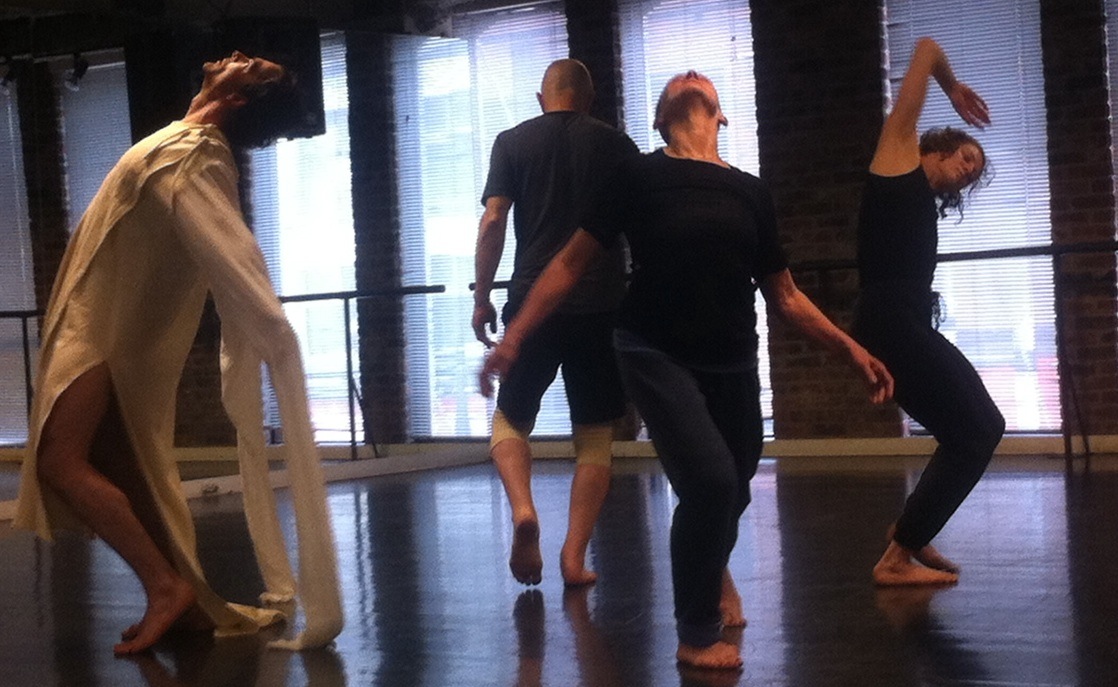 This was so deliberate and intentioned that in combination with the costume, I knew that I wanted to start the music with a similar sense of ceremony. It begins with percussionist and pianist entering solemnly, ringing temple bowls. The other four players (flute, clarinet, violin and violoncello) symbolise the four dancers. Each instrument in turn enters and starts to play the same melody, which eventually becomes a four-part canon. By the very end of the movement, they all come together over four octaves.
This was so deliberate and intentioned that in combination with the costume, I knew that I wanted to start the music with a similar sense of ceremony. It begins with percussionist and pianist entering solemnly, ringing temple bowls. The other four players (flute, clarinet, violin and violoncello) symbolise the four dancers. Each instrument in turn enters and starts to play the same melody, which eventually becomes a four-part canon. By the very end of the movement, they all come together over four octaves.
Coming up with the melody was a challenging departure for me. I wanted to connect the music in some way to love poetry. After looking at many poems, I landed on John Donne’s A Lecture Upon the Shadow, which begins:
Stand still, and I will read to thee
A lecture, love, in love’s philosophy.
So I recorded myself reading it in GarageBand. Yes, indeed. Quite possibly the only time I would ever do this, not because it didn’t work — it did — but because I can’t see myself ever needing to do something like this again! Then I applied a bit of autotuning (normally a heinous thing, but useful for these purposes) and transcribed my reading into pitches and rhythms.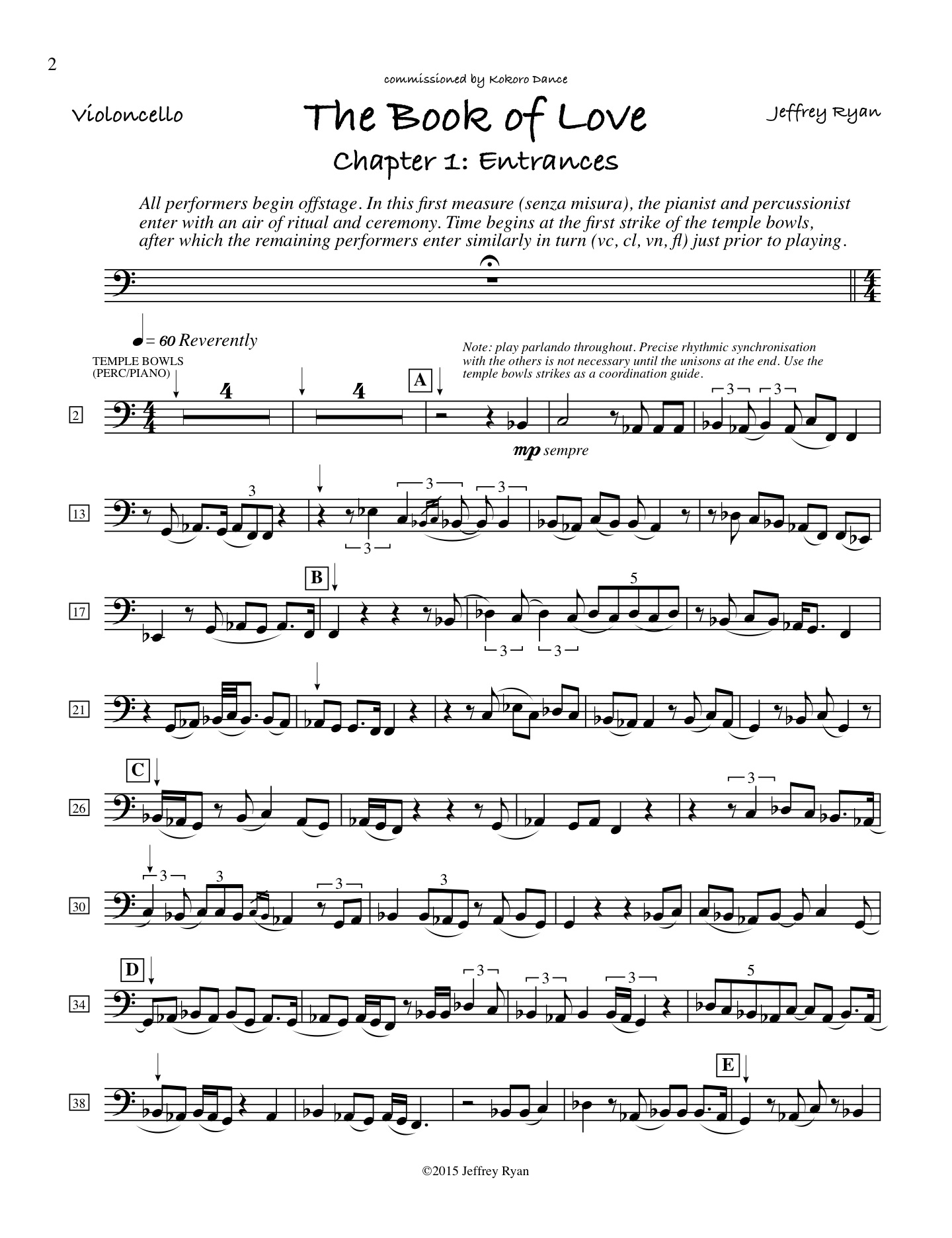 Which was quite painstaking, actually. I then transposed it down a bit, into a range that worked for all four melody instruments, et voilà!
Which was quite painstaking, actually. I then transposed it down a bit, into a range that worked for all four melody instruments, et voilà!
Which led to another first for me: I actually created this movement directly in the Finale notation program. Yes, this is the only music in my entire catalogue for which there is no pencil score. Only the single-line transcribed melody. I had all kinds of ideas of how this melody might be “canonised” and I had to be able to hear clearly (and quickly) which ones would work, so having Finale play it back, regardless how cringeworthy the instrument sounds would be, was the most efficient. Would each instrument play a different transposition, or the same? How far apart would each entry be? Initially, I had four different melodies (from readings of four different poems) and though I tried all sorts of possibilities, it sounded astoundingly horrible. After a week or more of experiments, in the end — isn’t this always the way? — the simplest solution was also the best and most effective. Everyone on the same tune, in the same key, each voice finishing and merging into the previous voice, until the quartet speaks as one, briefly, before being torn apart by the next movement.
And all that from seeing a mockup of a costume! Sometimes the clothes make the music…
Soon there would be enough movements to start shaping the big musical structure of the piece. More on that coming up!
(Photo 1 courtesy Jonathan Baldock; photos 2 and 3 by Chris Randle)

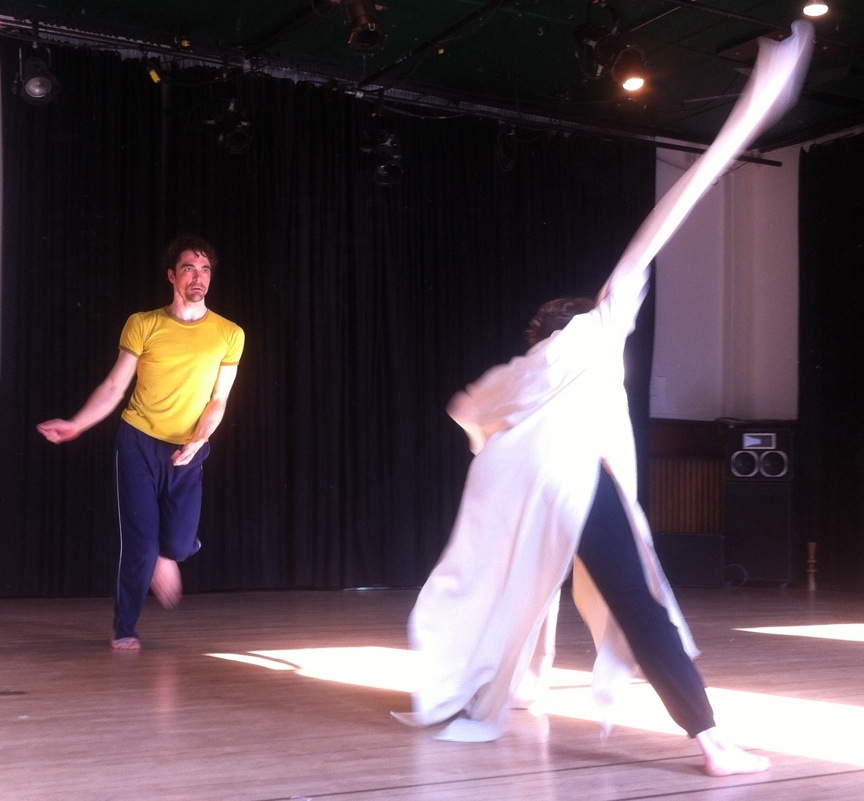
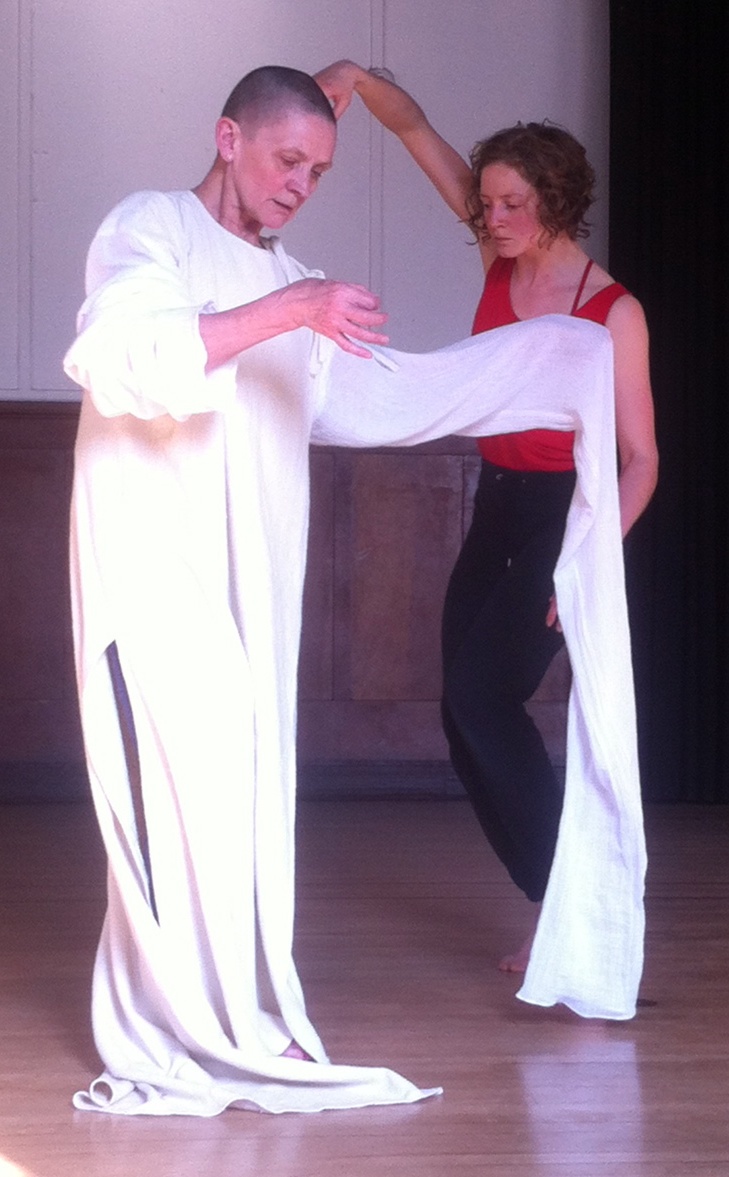

Leave A Comment